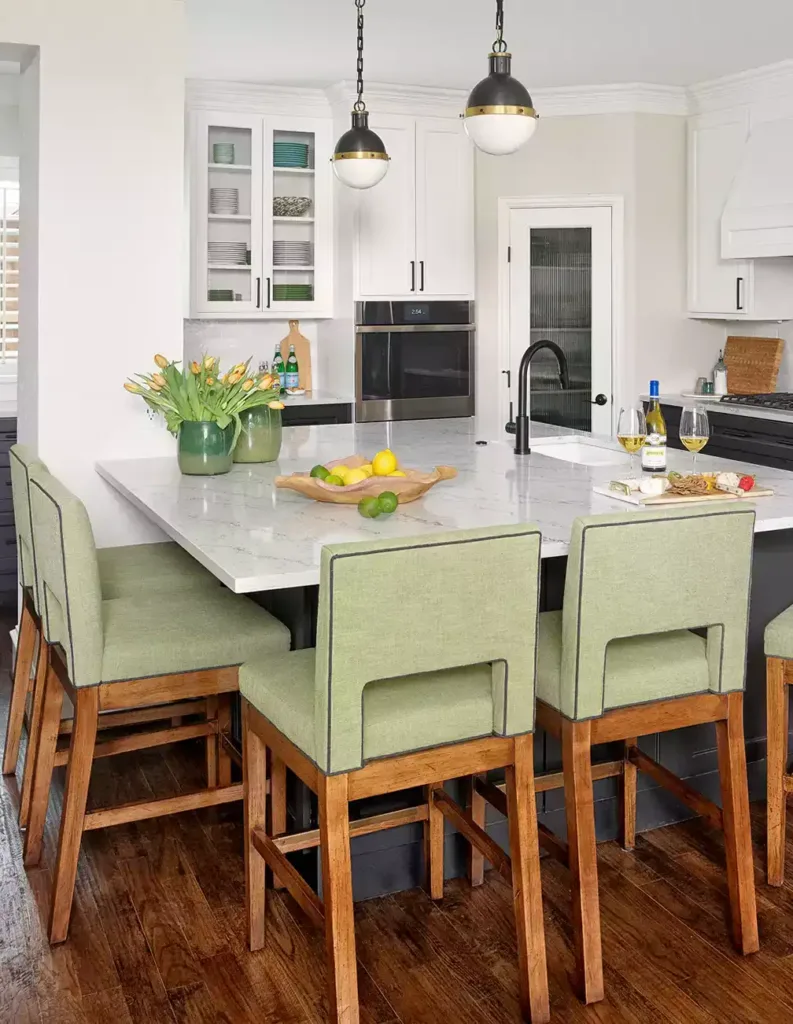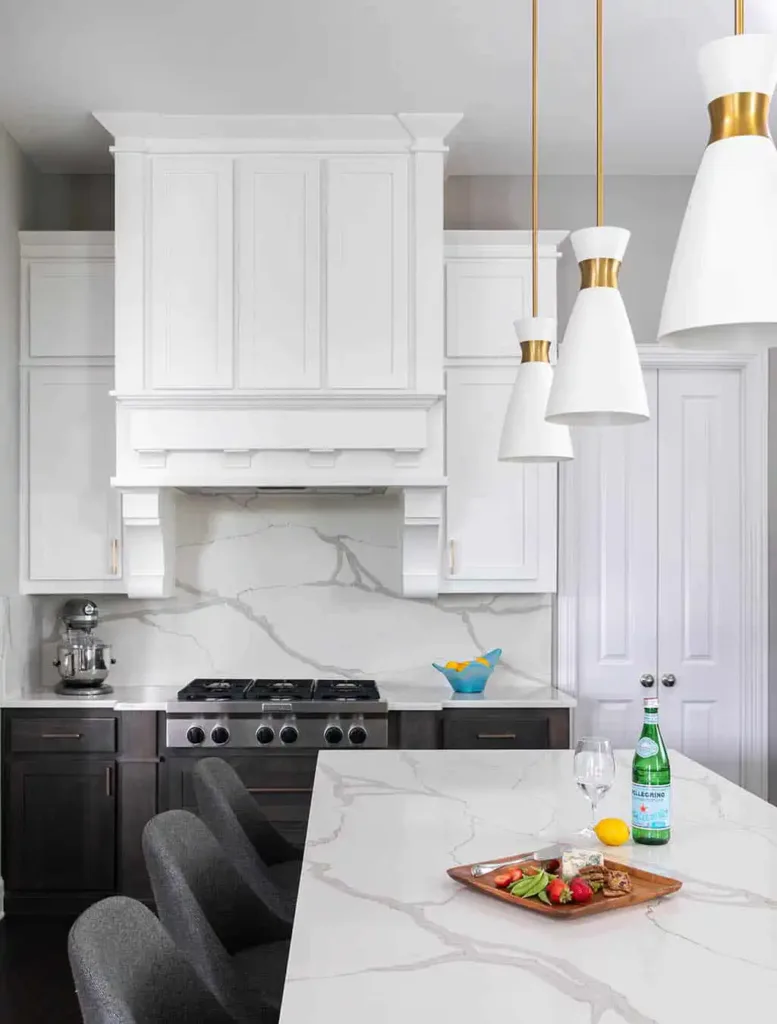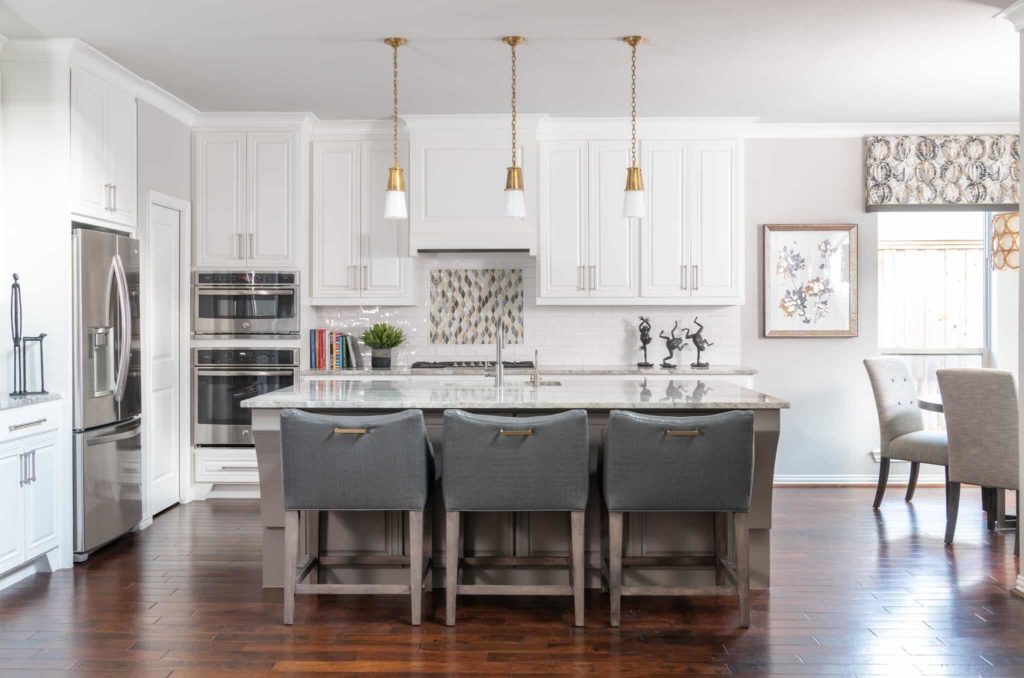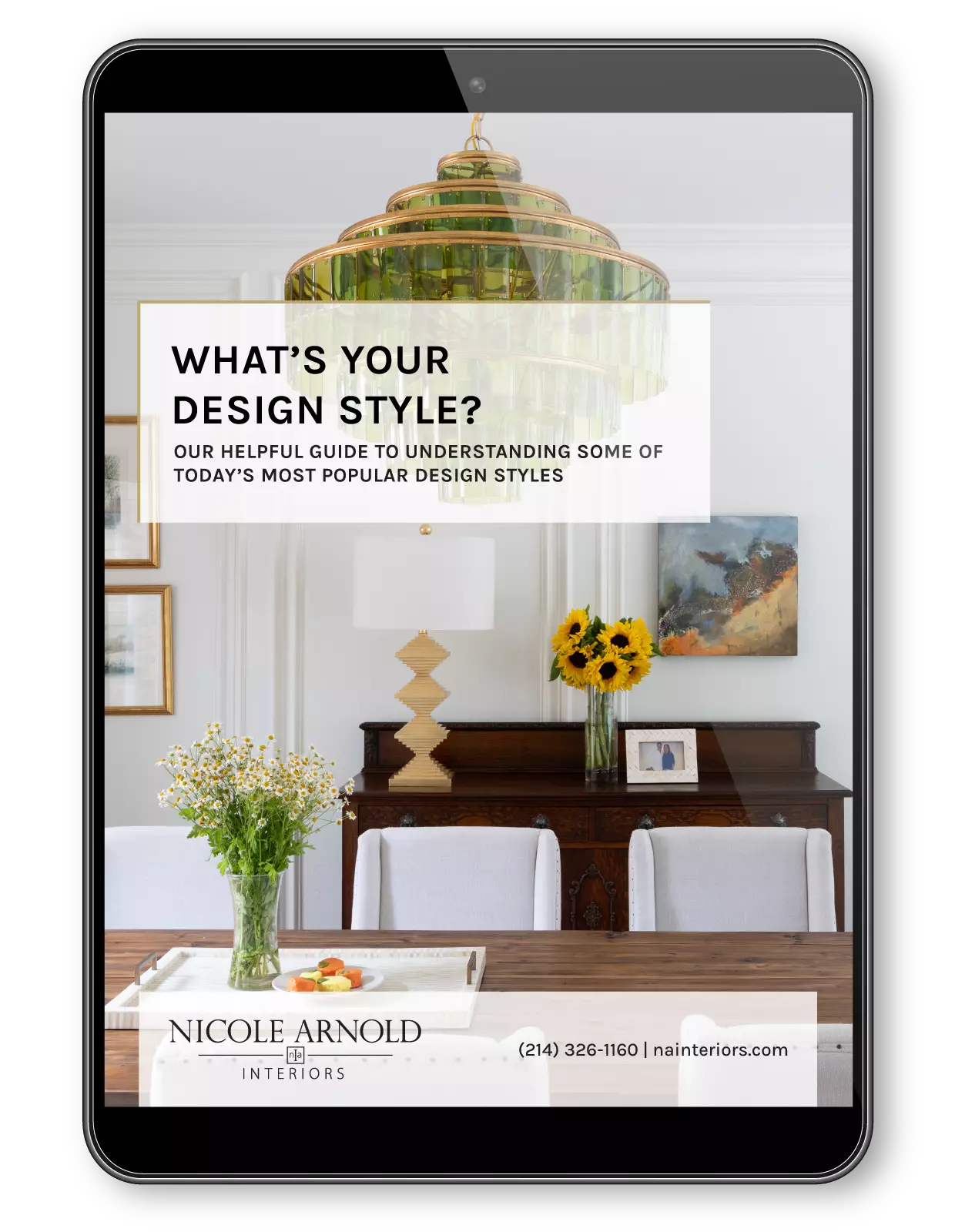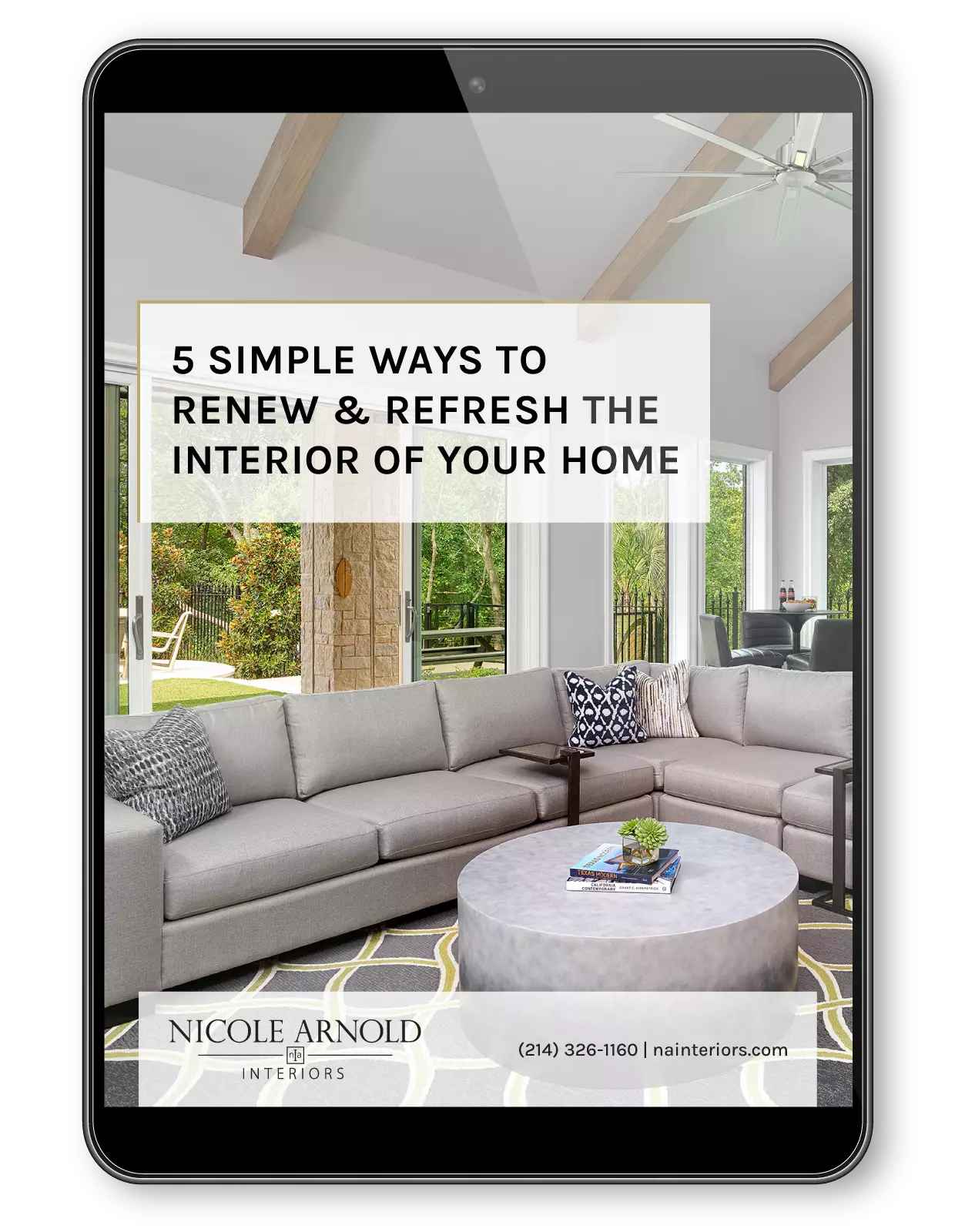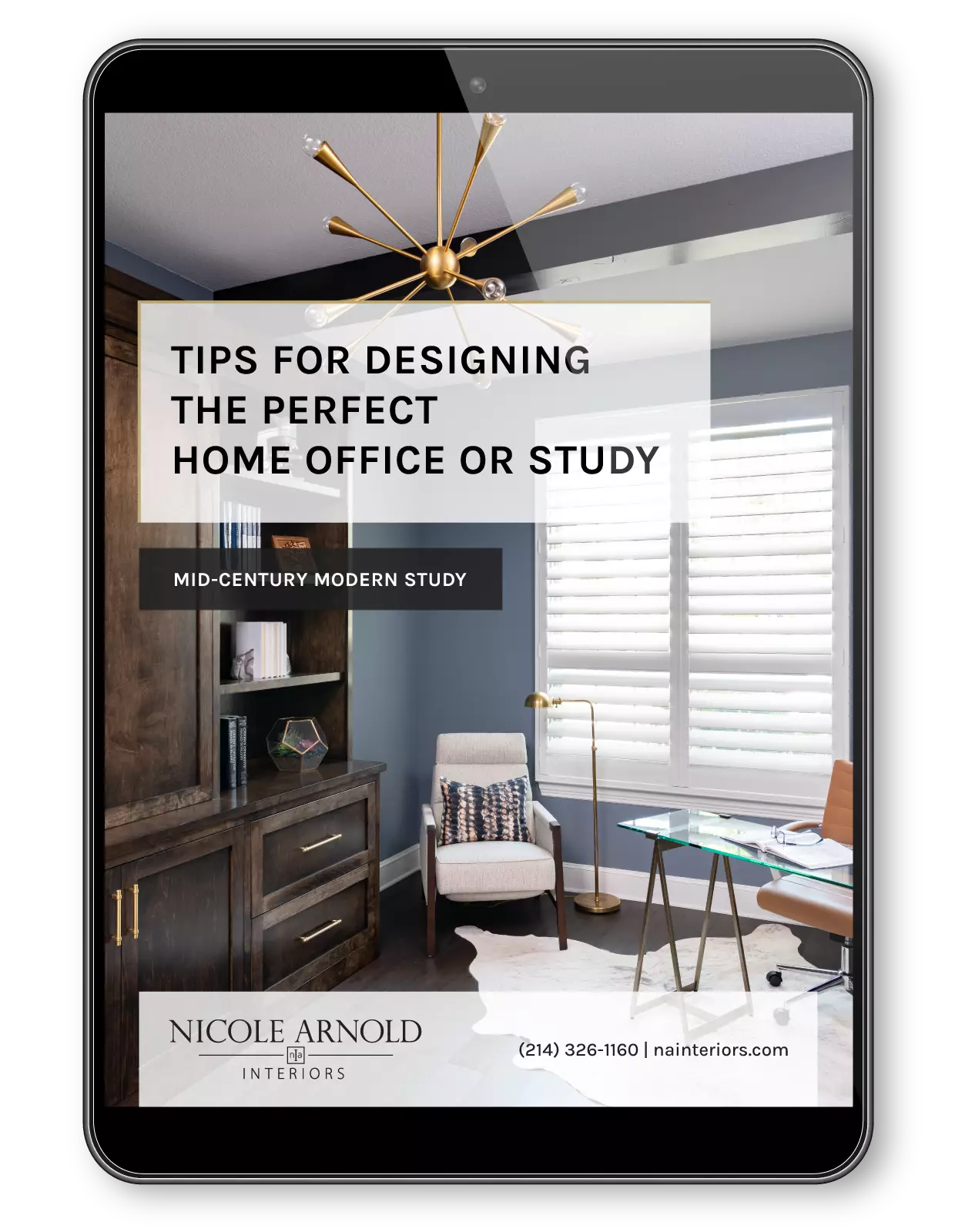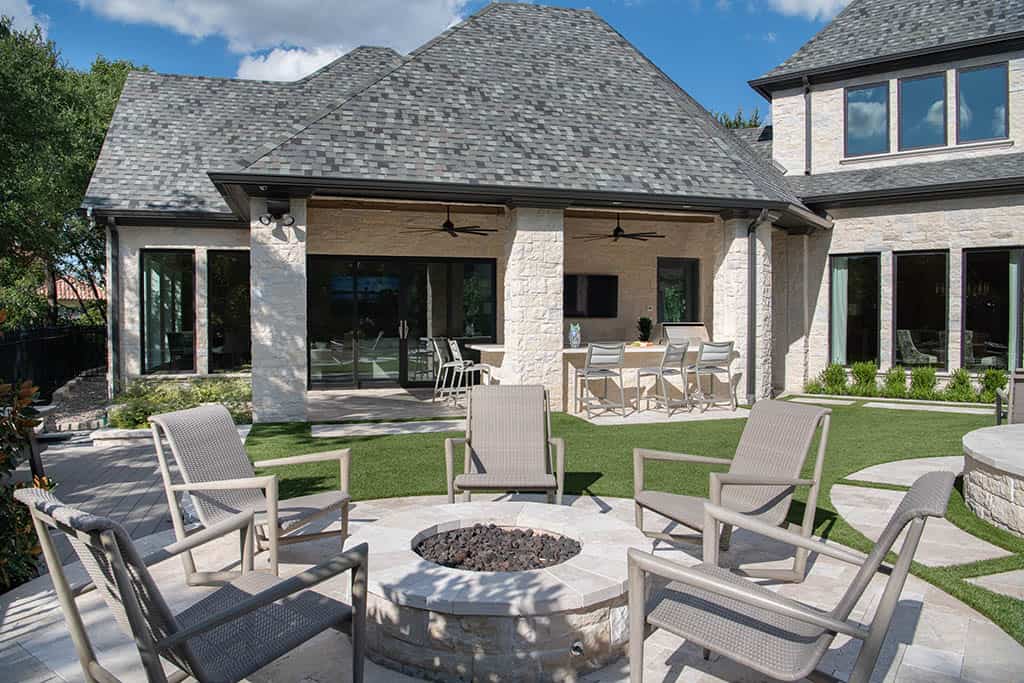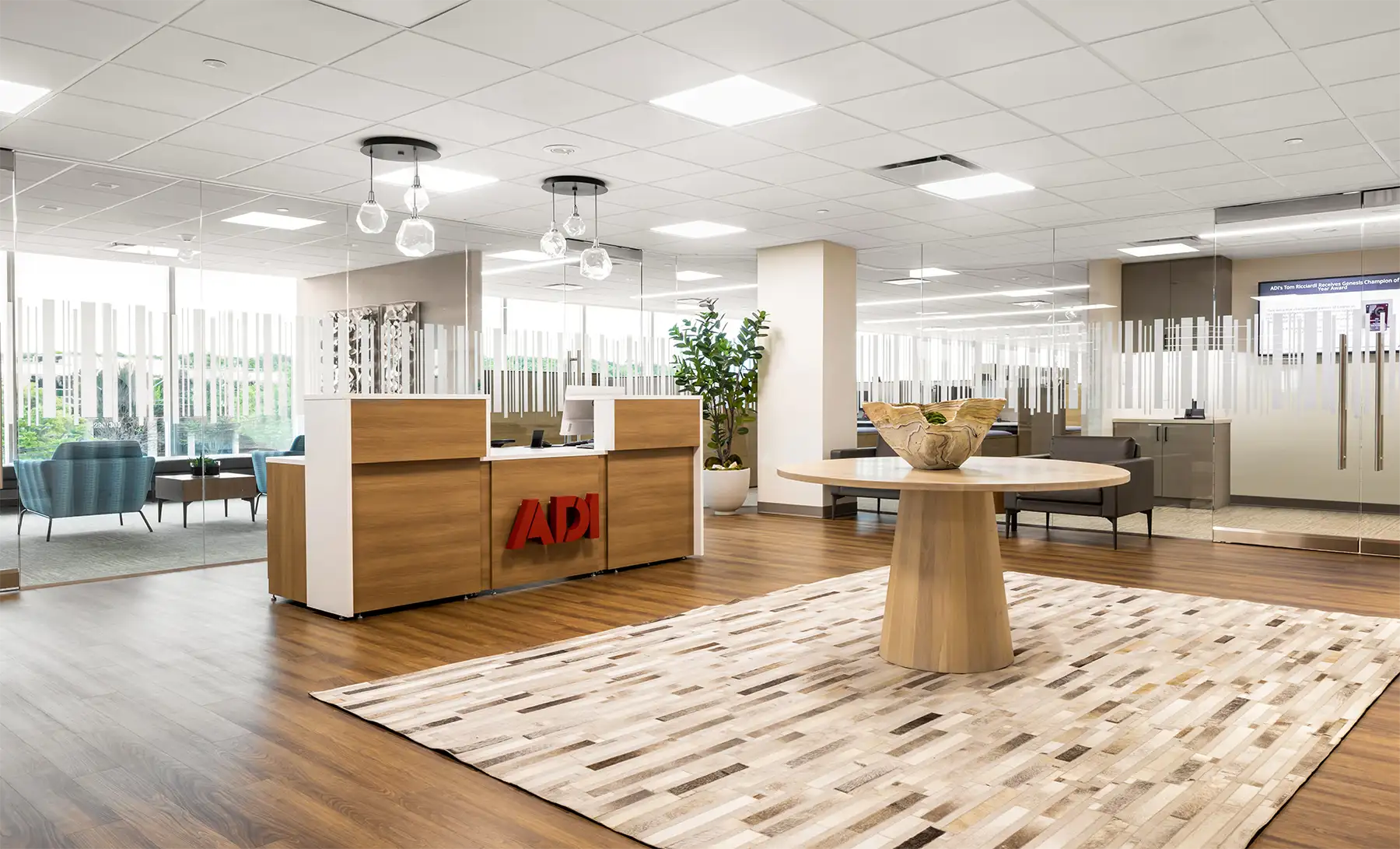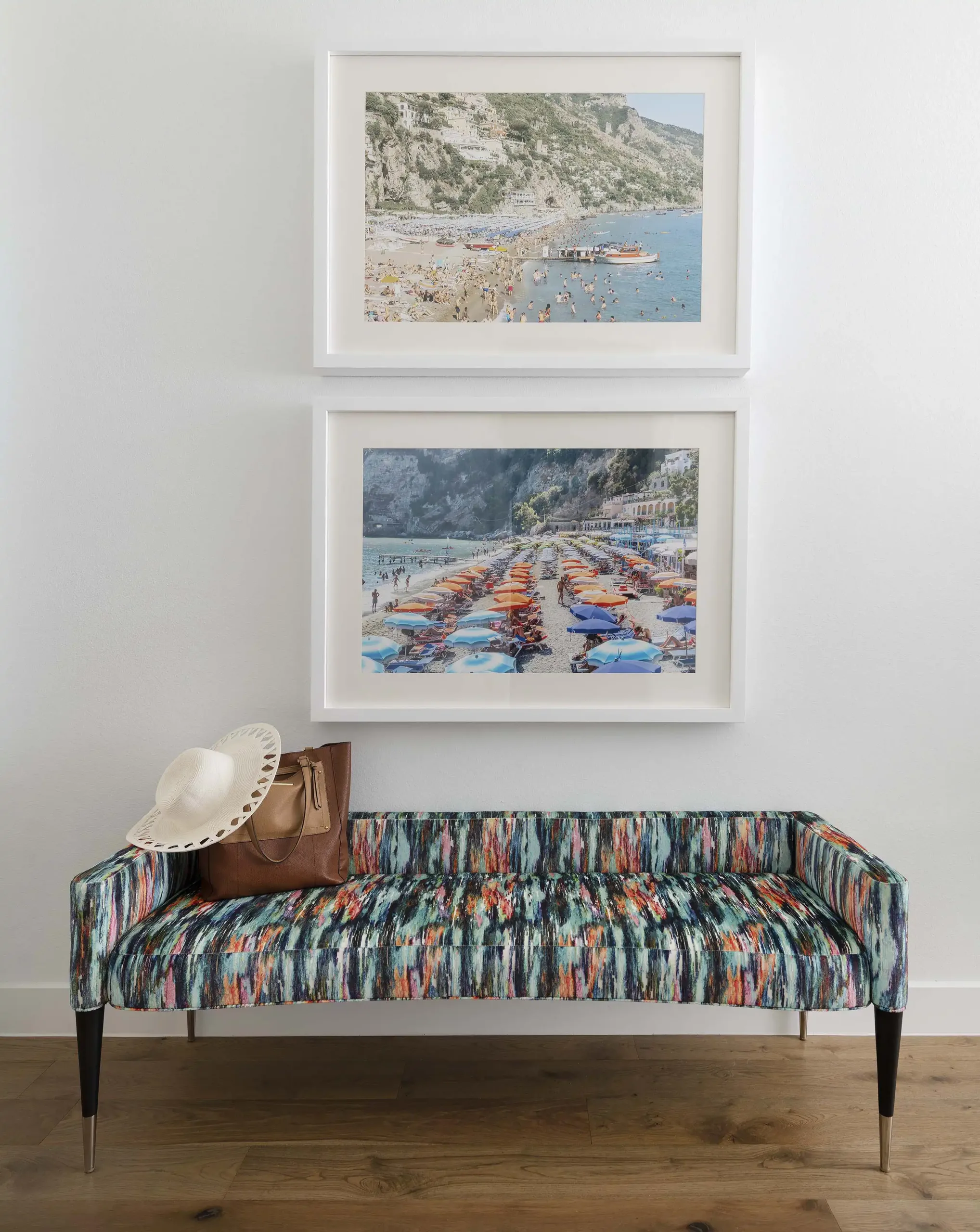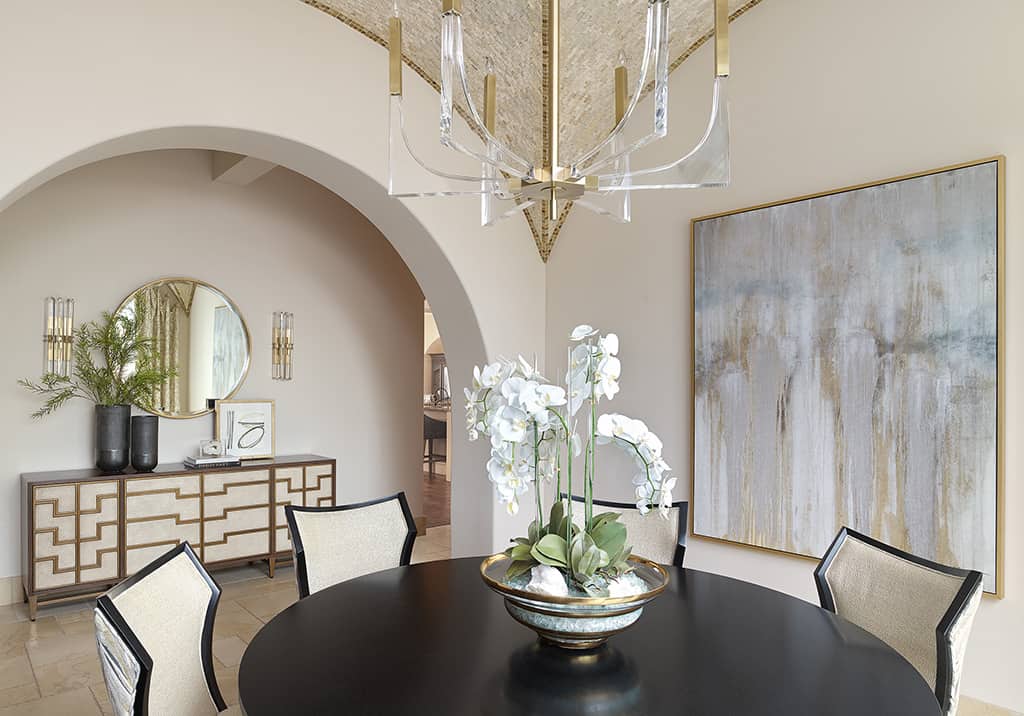Pendant lights are one of the most popular lighting fixtures used over kitchen islands, and for good reason. These lights serve as elegant jewelry pieces that add a finishing touch to your kitchen’s overall design. When done right, they can stand out and become a unique and stylish conversation piece. However, if basic design principles aren’t considered during the selection and installation process, their functionality can suffer and they might end up being more of a distraction in the room instead. Here are some helpful tips to keep in mind when choosing the perfect pendant lights for your kitchen!
Scale
Let’s start with size, because it matters!
Choose pendants in proportion to your kitchen island size (surface area) as well as the height of your ceiling. Typically, taller ceilings and larger island surfaces welcome larger pendants. However, a series of smaller diameter pendants can be just as impactful as two or three large open fixtures.
Geometry
Shapes are very important when selecting any fixture in your home, including the lighting. When used intentionally, geometric themes can make a huge impact, especially in commercial or thematic residential designs. However, more subtle nods to geometry are also important, like whether or not a light fixture flows with surrounding curves or extends in a linear or more structured manner. Selecting the appropriate shaped lighting will certainly set the tone and ambiance of your space.
Finish
Let’s talk about colors! It used to be that the light fixture finish (or color) needed to match the faucet, the cabinet hardware, door handles and any other metals within the surrounding area. Not anymore! Break free of that former interior design rule and have fun mixing metals between your light fixtures and other elements in the home. A word of caution: mixing finishes takes a keen eye, so definitely be intentional with this to ensure a definitive and well-designed look.
Light Output
One of the biggest areas people end up dissatisfied with their pendant choice is when seeing the light output of each fixture. Pendants should never be solely relied upon as a single light source in the kitchen. To ensure light is balanced throughout the space, a combination of recessed can lights, decorative pendants and under/over cabinet lighting should be used.
Pendant lights are typically intended for ambiance and bulbs are approximately 2700-3500 Kelvin with various degrees of brightness, depending on the shade or cage of each fixture. A white shade or an open cage will definitely disperse light throughout the room, whereas a solid metal or painted shade, although dramatic, will only transfer light through the openings of that shade, most often upward and/or downward. Be certain the pendants you’ve selected are actually going to serve the intended design and function.
We’re Ready To Light Up Your Interior!
Overall, it’s important to consider your kitchen design and which pendant features will deliver your goals best. An experienced interior designer can easily recommend ideal looks and functions to ensure your residential or commercial kitchen is all it can be… and should be! Request a consultation with our experts today!


